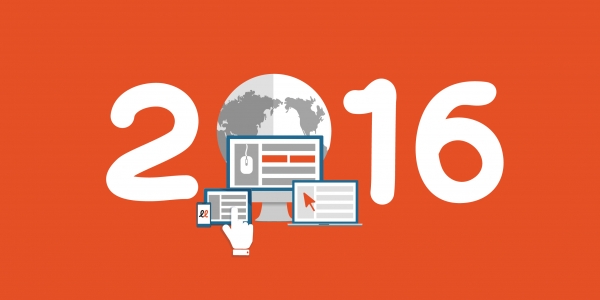Our predictions for 2016!

As the final days of 2015 ebb away, it’s time to look ahead to what is predicted to be influencing our Marketing strategies in the New Year.
Video, video video:
It is looking like video will very much take centre stage in 2016. Whilst it is far from a new phenomenon, the New Year will likely herald the arrival of video-based advertisements in Google’s search results rather than simply the current text-based ads used. As people are increasingly using video to share their experiences and stories with one another, marketers will embrace this trend of utilising visual forms of content more than ever in the coming year.
What’s more, Facebook’s recent introduction of 360-degree video has been seen as a pre-cursor to more immersive video experiences, which brings me nicely onto my next prediction for 2016...
Virtual Reality:
Whilst Google Glass may have been something of a non-starter, 2016 sees the arrival of the first Virtual Reality (VR) headsets; namely the HTC Vive and the Oculus Rift. Facebook’s purchase of Oculus in the Summer of 2014 means we are likely to see VR integrated into social media platforms and video channels, opening up huge potential for marketers and advertisers to really make waves with their digital marketing strategies in 2016. Just as well, then, that marketers are forecasted to increase total digital marketing spend to around 35% of their overall budgets in this coming year, it sounds like they might just need to!
Wearable technology:
Once again, transitioning smoothly from Virtual Reality headsets, wearable technology is predicted to become a powerful platform for customer engagement in the year ahead thanks to the introduction of independent smartwatches not requiring a smartphone connection. This previous requirement of smartwatches has often limited their functionality as well as the possibilities they present to marketers. Smartwatches created to specifically interact with the internet of things could provide marketers the opportunity to analyse users’ habits, behaviour and even attitudes; effectively using big data to serve customers in a more targeted, relevant way.
Content Marketing:
Content Marketing has proven itself as an effective way of attracting and retaining customers. Rather than constantly pushing the company’s own products and services, Content Marketing is about going one step further; delivering valuable, relevant and interactive experiences to your audience at the right time. It is basically the art of communicating with your customers/users without actually selling – you are delivering information which makes your potential buyer more knowledgeable. In 2016, 51% of B2Bs plan to increase their spend on Content Marketing. Recent Content mediums/tools such as Meerkat and Periscope will see increasing adoption by Marketers looking to create these personalised, engaging experiences for their customers in the year ahead.
Mobile:
Whilst not a new concept, a mobile-first attitude will be more important than ever in 2016. Around 80% of mobile time is spent in-app and now Google has begun rolling out app-only content in its Search Engine Results Pages (SERPs). It allows end users to access the data in-app within the SERPs as if they were using the installed app on their smartphone. Couple this with UI/UX specialists’ work to further learn how we gesture, flick, tap and scroll on our devices as well as the increasing integration between brand apps, ecommerce sites and their social media accounts and it all very much portrays an irrefutable need (more than ever) to have a mobile-first approach in order to be a winner in 2016.
Paid Advertising:
Our final prediction for 2016 relates to the increasing amount of coverage/airtime given to paid forms of advertising. Not only has Google been giving more SERP real estate to paid ads (thus cutting the number of organic results being shown per page in the process) this past year has seen increasing difficulty to get organic content noticed on social media. Facebook’s News Feed ranking algorithm changes has seen a huge decrease in the organic reach of brand ads, pushing marketers to instead spend “Facebook dollars” promoting their posts and Pages to increase their following and raise brand awareness. It has even been reported that Facebook only shows a brand post to a mere 16% of its fans, whilst the reach of an average Tweet is lower still; at 10% of followers. This can considerably impact traffic levels to your website and can also impact your SEO strategy.
The solution? Create custom content and pay for its proper distribution on social media platforms. It very much appears to be the way to succeed in the social advertising arena in 2016.
So, there you have it, our predictions for the world of marketing in 2016. What are your thoughts on the six areas I have covered? Do you know of any other trends predicted to influence how we will plan our marketing strategies in the coming year? Get in touch and let us know!
